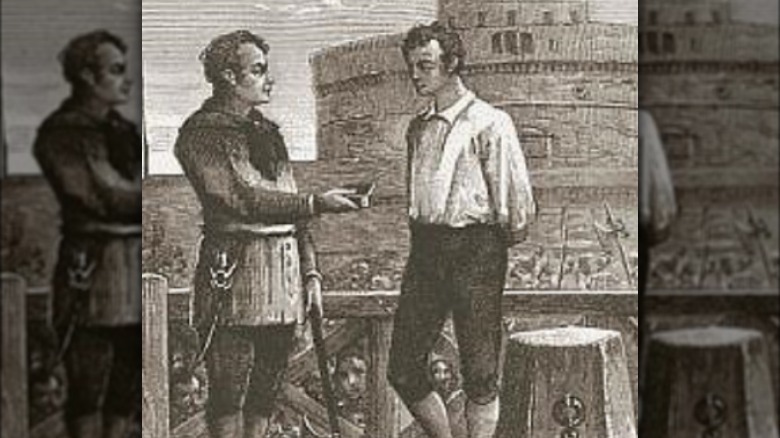Giovanni Battista Bugatti, better known as Mastro Titta, was the official executioner of the Papal States, a position he held with grim distinction from 1796 to 1864. Born in Senigallia in 1779, Bugatti began his career as an executioner at the age of 17 and went on to execute 514 people during his 68 years of service.
Career and Notoriety

Bugatti meticulously recorded the names of 516 individuals he executed, though two were excluded from his personal count. One convict was shot, and another was hanged and quartered by Bugatti’s assistant. His career spanned several pontificates, and he executed sentences across the pontifical territories. Bugatti’s first execution, described in a testimony found in the historical archives of Valentano, recounts the beheading of Marco Rossi on March 28, 1797, for the murder of his uncle and cousin over an inheritance dispute.
Role and Recognition

Due to his occupation, Bugatti was not well-liked by the public. He sold umbrellas in Rome during periods of inactivity and was prudently restricted from entering the city’s center. Executions took place on the other side of the Tiber River, typically in Piazza del Popolo, Campo de’ Fiori, or Piazza del Velabro. The phrase “When Mastro Titta crosses the bridge” (Mastro Titta attraversa il ponte) became synonymous with the scheduling of a capital punishment execution, as Bugatti had to cross the Ponte Sant’Angelo to perform his duties.
Cultural Impact

Public executions were macabre spectacles in Rome, drawing large crowds of adults and children. Bugatti’s scarlet cloak, worn during executions, is preserved in Rome’s Criminology Museum. His presence and the public nature of his work left a lasting impression on the city’s culture and history. The term “Mastro Titta” became synonymous with the role of an executioner in Rome, extending even to his successors.
Legacy and Literature

Charles Dickens, the renowned English writer, witnessed one of Bugatti’s executions in 1845 and wrote about it in his book “Letters from Italy.” In 1864, Bugatti retired and was replaced by Vincenzo Balducci. Pope Pius IX granted him a pension of 30 scudi per month.
In 1891, a false autobiography titled “Mastro Titta, the Executioner of Rome: Memoirs of an Executioner Written by Himself” was published. This work, though not authored by Bugatti, drew from the notebook he kept throughout his career, providing a vivid, albeit fictionalized, account of his life and work.
Bugatti’s life as an executioner, his meticulous records, and the cultural rituals surrounding public executions in Rome offer a unique and chilling glimpse into the justice system and societal norms of the Papal States during his lifetime.
